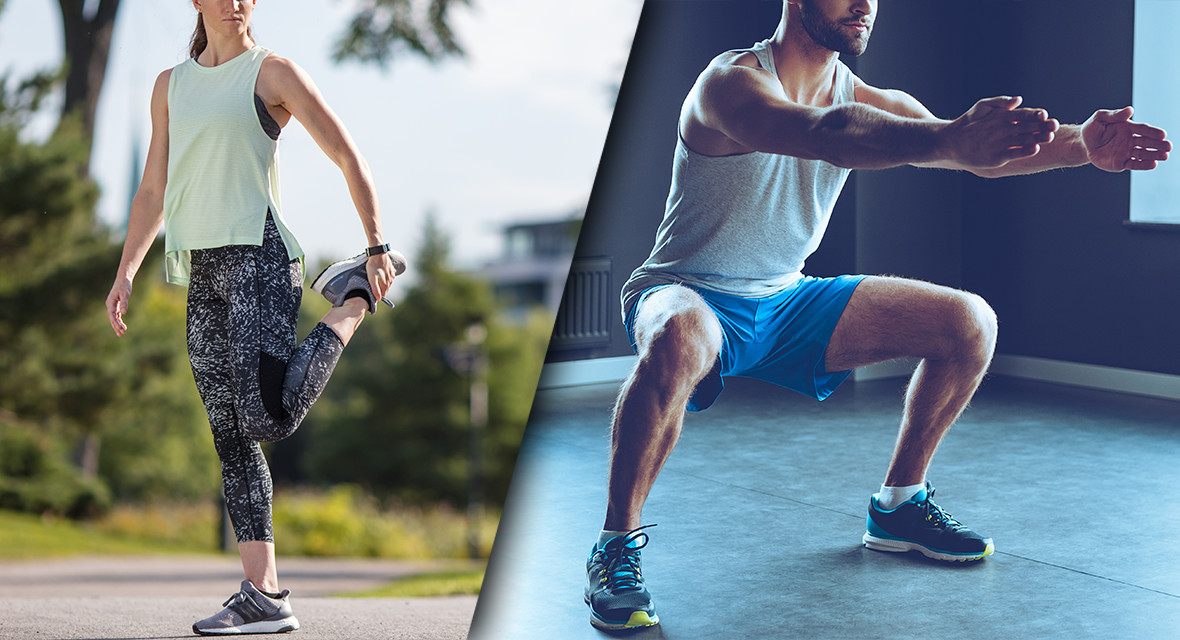
Running: Preparing yourself and preventing injuries
If you’ve taken a break from jogging due to injury, bad weather or a packed schedule, and you’re itching to get back up to speed in time for spring, that’s great! Just be sure to take your time to do it right. Before you get up to full speed, these tips will help you run better and meet your objectives.
Start off slowly
Physiotherapists and other running specialists will remind you that it’s better to run twenty minutes, four times a week than two hours every fifteen days. Increasing your speed or endurance is all about a steady progression that’s adapted to you. Running too fast or too hard could lead to injuries that might keep you from running for a couple weeks.
Why not consider a running program? They give you a structured way to set your goals, start up comfortably and intensify your runs stride by stride. If you’re following an adapted program with an objective you’re shooting for, a good rule of thumb is not to increase your jogging intensity by more than 10% per week. And even if you’re a seasoned runner, if it’s been over three weeks since you’ve been jogging, make sure to return to your program gradually.
If you’ve suffered an injury, be particularly attentive to how your body feels. If you sense the beginnings of any running-related pain, stop and consult a professional.
For seasoned runners, the progressive return can be frustrating, but it’s truly worth the time to be able to fully take advantage of the season.
Warm up well
Don’t skip out on physical preparation exercises before running season as they condition both the body and mind. This is called neuromuscular reprogramming - learning to use the right muscle at the right time - which is one of the most effective ways to improve your running patterns.
A few simple exercises can help you avoid injuries. We suggest you do these exercises in a static position for around 15 seconds for three to four sets. Don’t forget to breathe deeply while doing them.
The front plank strengthens the torso, building stability while activating the arms, legs and glutes.
The side plank works the adductor muscles, glutes, abs, shoulders and more. Like the front plank, it makes your torso more stable and helps prevent back injuries.
The chair against the wall or squat is a great exercise to build leg strength. Throughout the exercise, you should be able to see your toes while aligning the kneecaps with the second toe.
The single-leg balance is an exercise that every runner should integrate into their warm-up. Ideal for proprioception, this gentle warm-up helps you better “feel” your foot on the ground.
Lunges, with or without knees to the ground, stimulate the dynamic of the foot push-off that’s part of your running stride. Ideally, you should keep your back straight and engage the gluteus maximus rather than the hamstrings at the start of the hip extension.
Vary your sports to reduce mechanical stress and up your cardio
Another concept in the prevention of running-related foot injuries is to mix it up with a mostly impact-free sport, like swimming, medium-intensity cycling or yoga, twice per week or on the days where you don’t run.
Yoga for joggers is increasingly popular. Yoga builds overall muscle tone and helps you better manage your breathing and mental concentration. Plus, it develops body awareness, which is perfect for runners of all levels. But be careful not to overstretch! We recommend that you stretch only to the distance you actually extend to in your jogging stride, whether you do it after jogging or on the days you don’t run, in order to avoid muscle strains.
Keep in mind that jogging should always be a blast! Aside from these guidelines, always listen to your body and never hesitate to consult a professional if you feel discomfort or pain, or if you’d like to push your performances further!
Marie-Pierre Gervais
Marie-Pierre Gervais is a physiotherapist who received her Masters in 2012 from the Université de Montréal and is certified + by the Clinique du Coureur. She evaluates and treats athletes’ running styles to optimize their performance and prevent injuries. Also a yoga instructor, Marie-Pierre gives specially designed yoga classes for runners. She’s also a conference speaker who talks about injury prevention.












